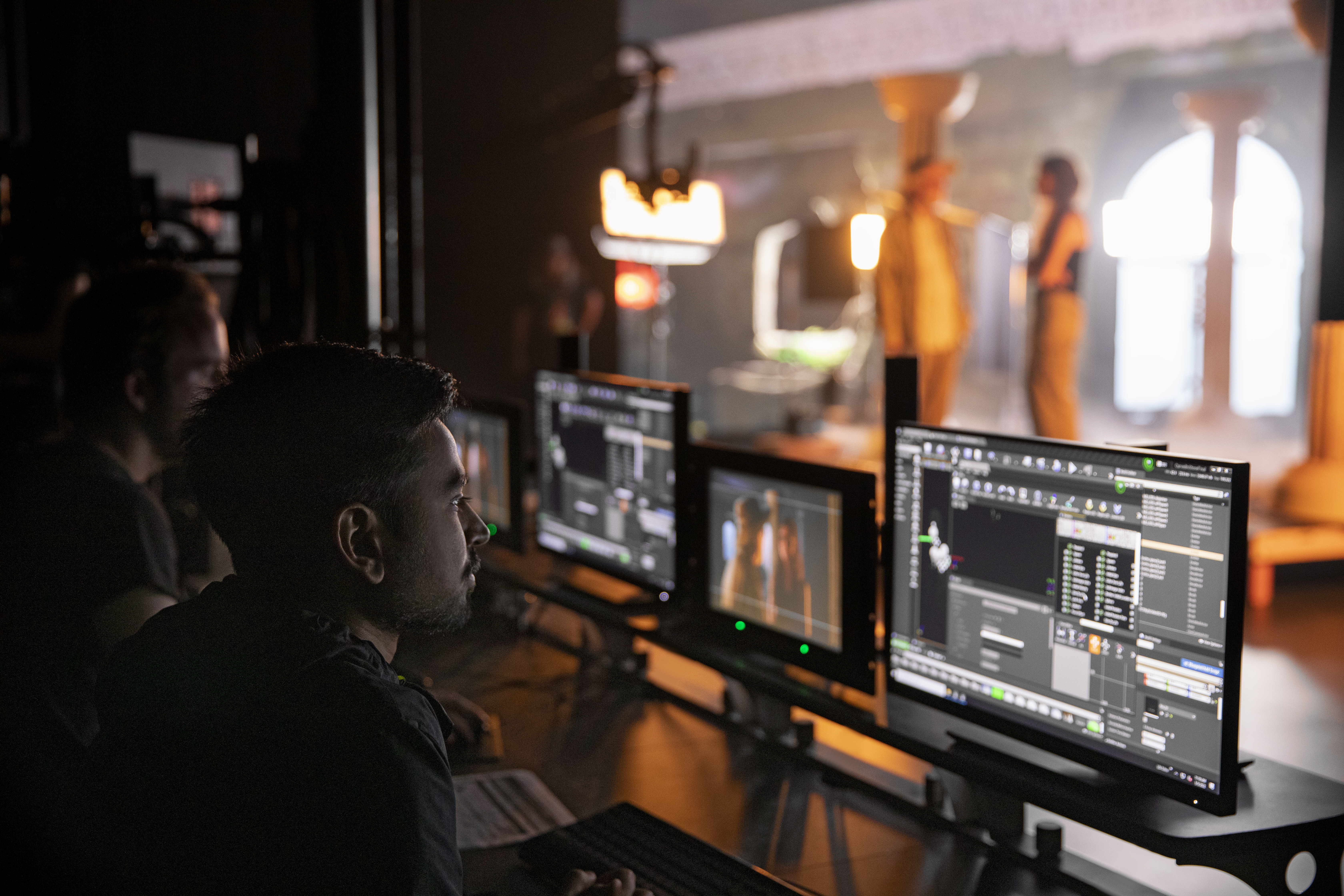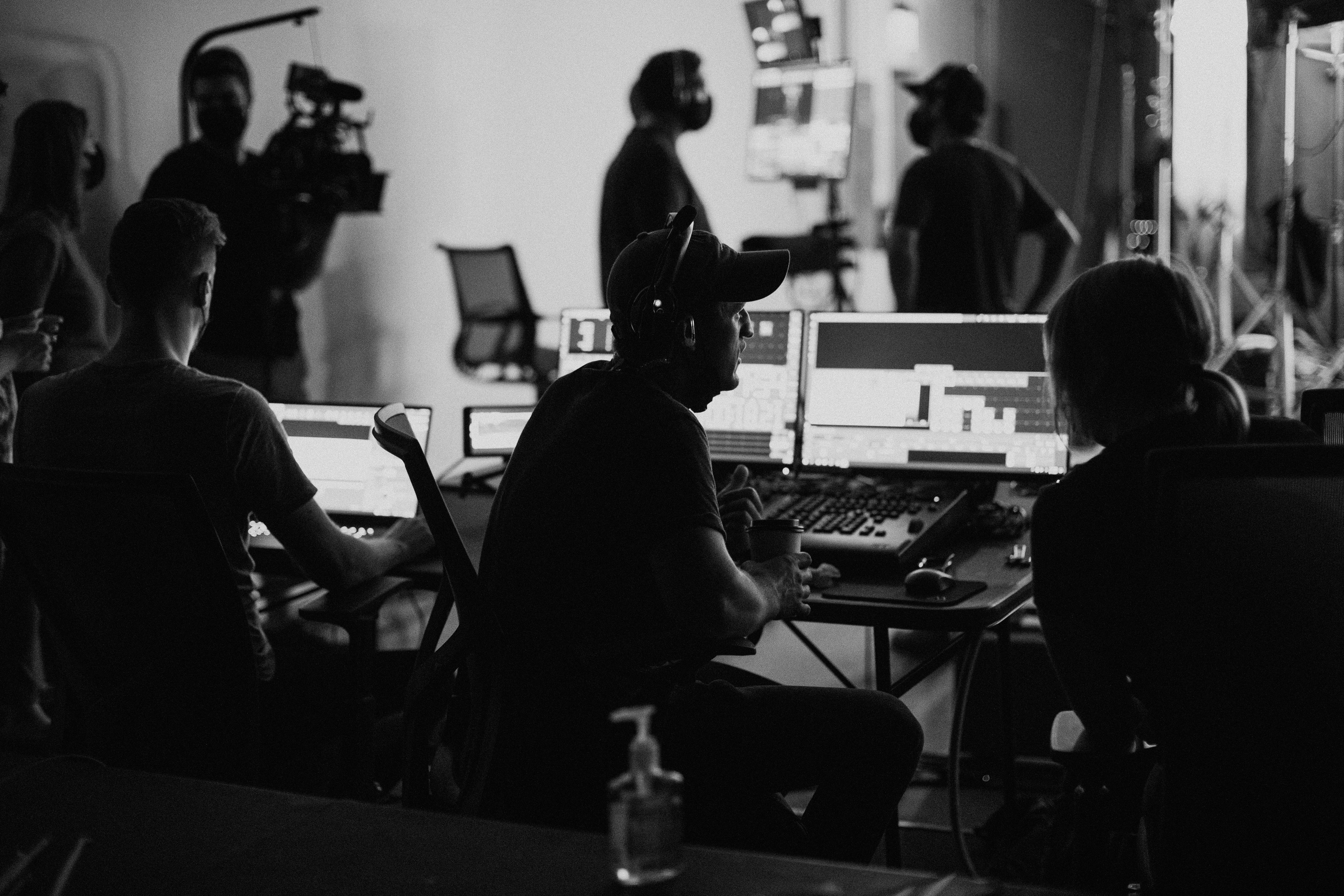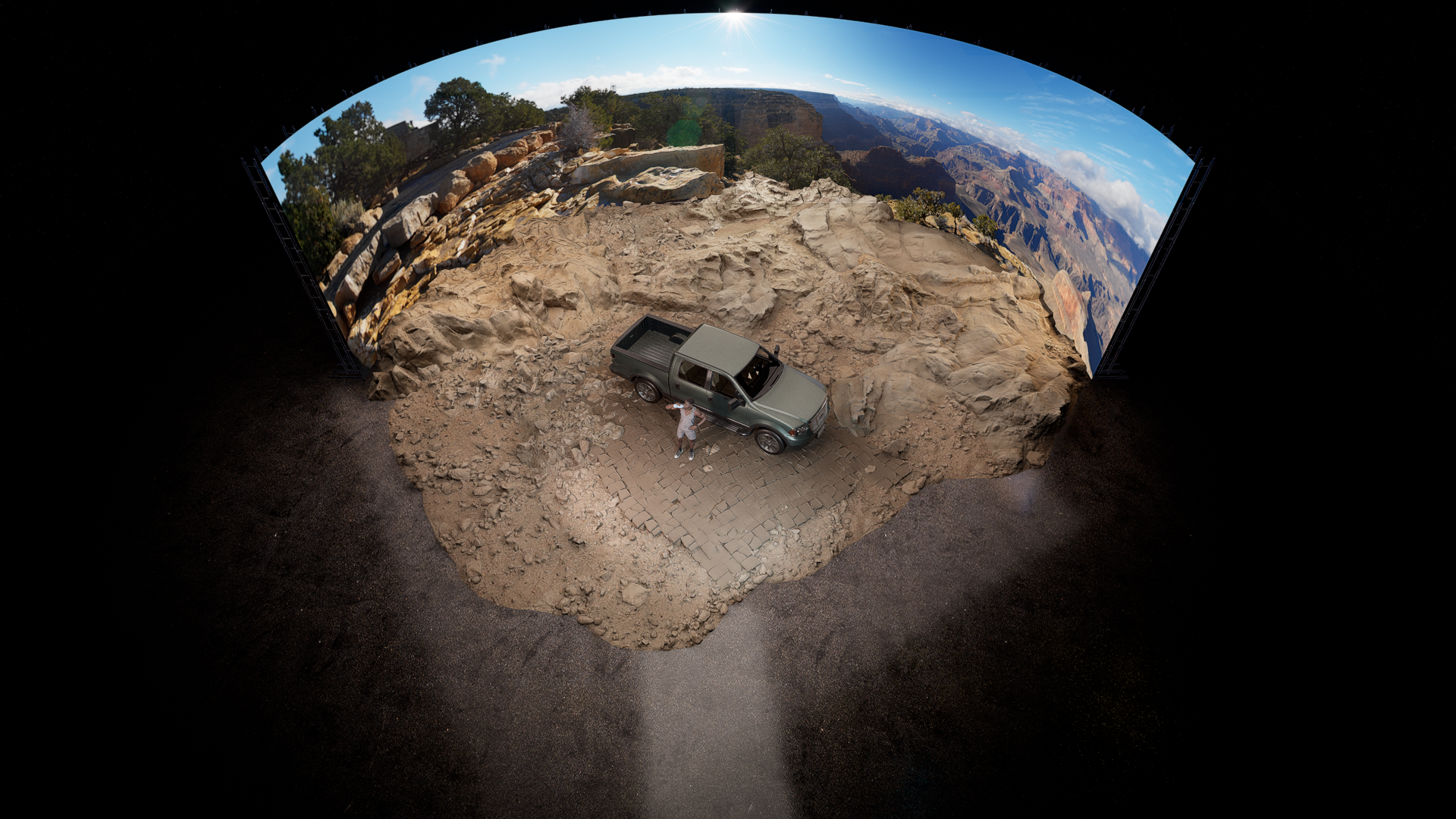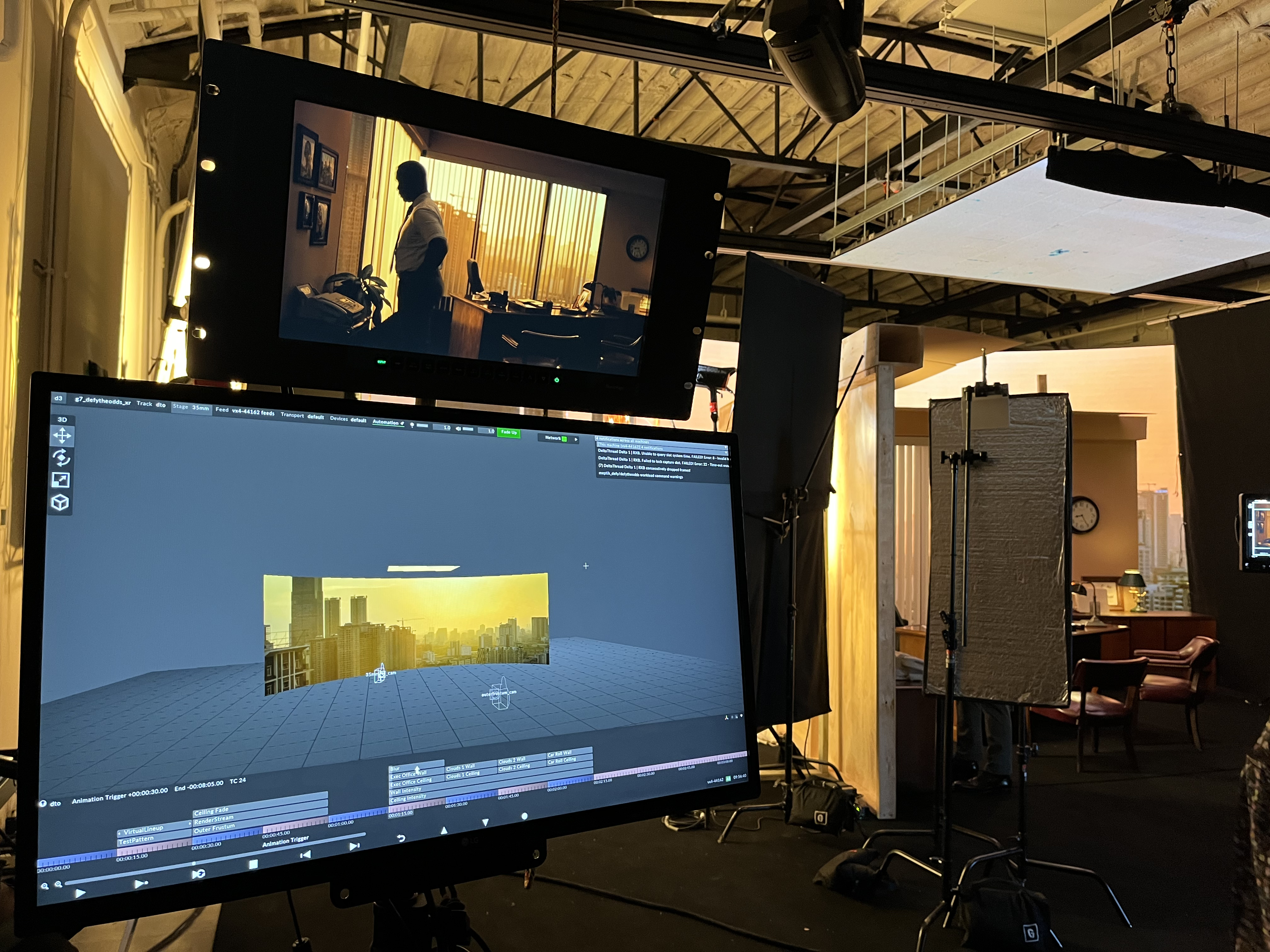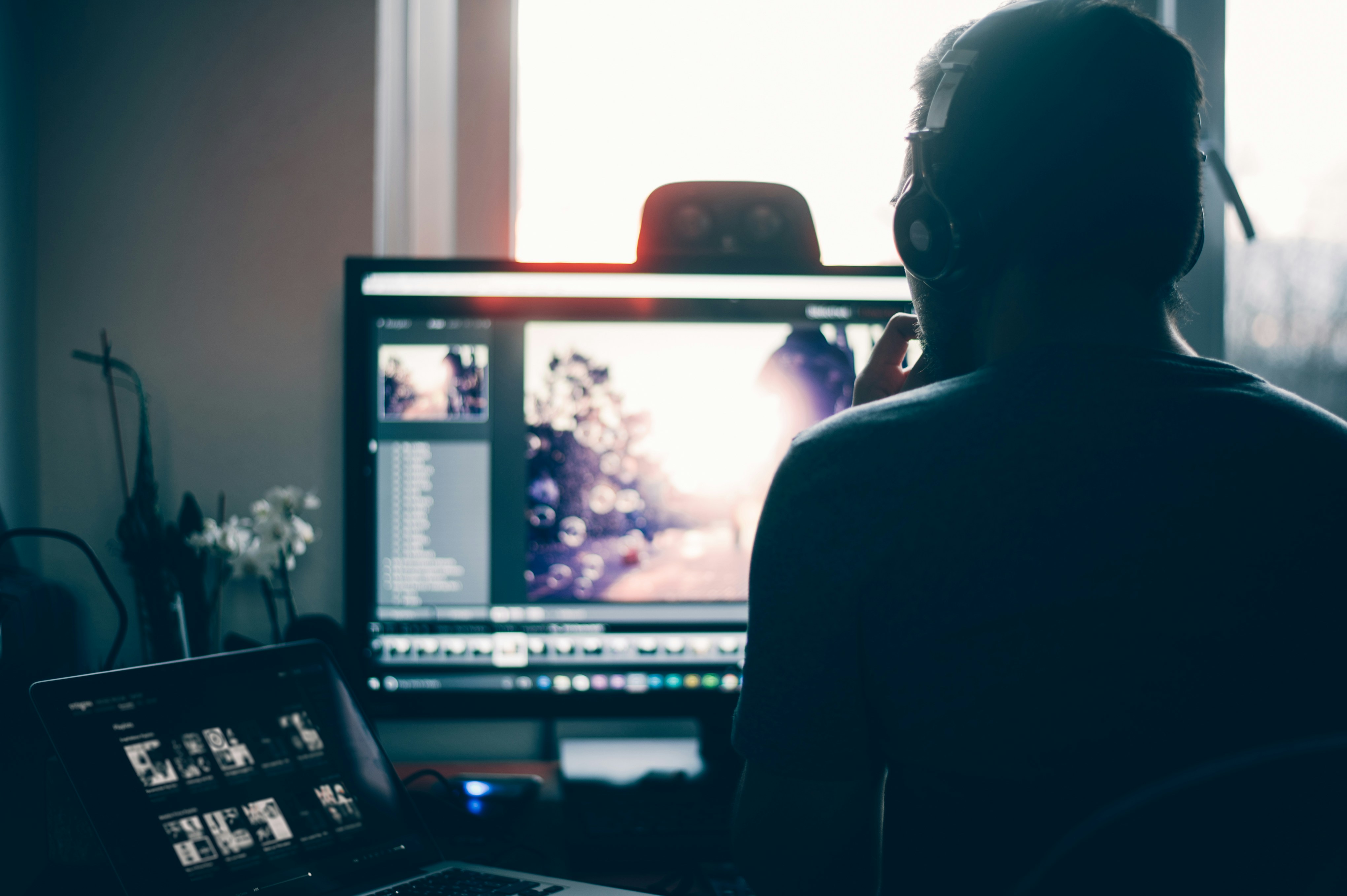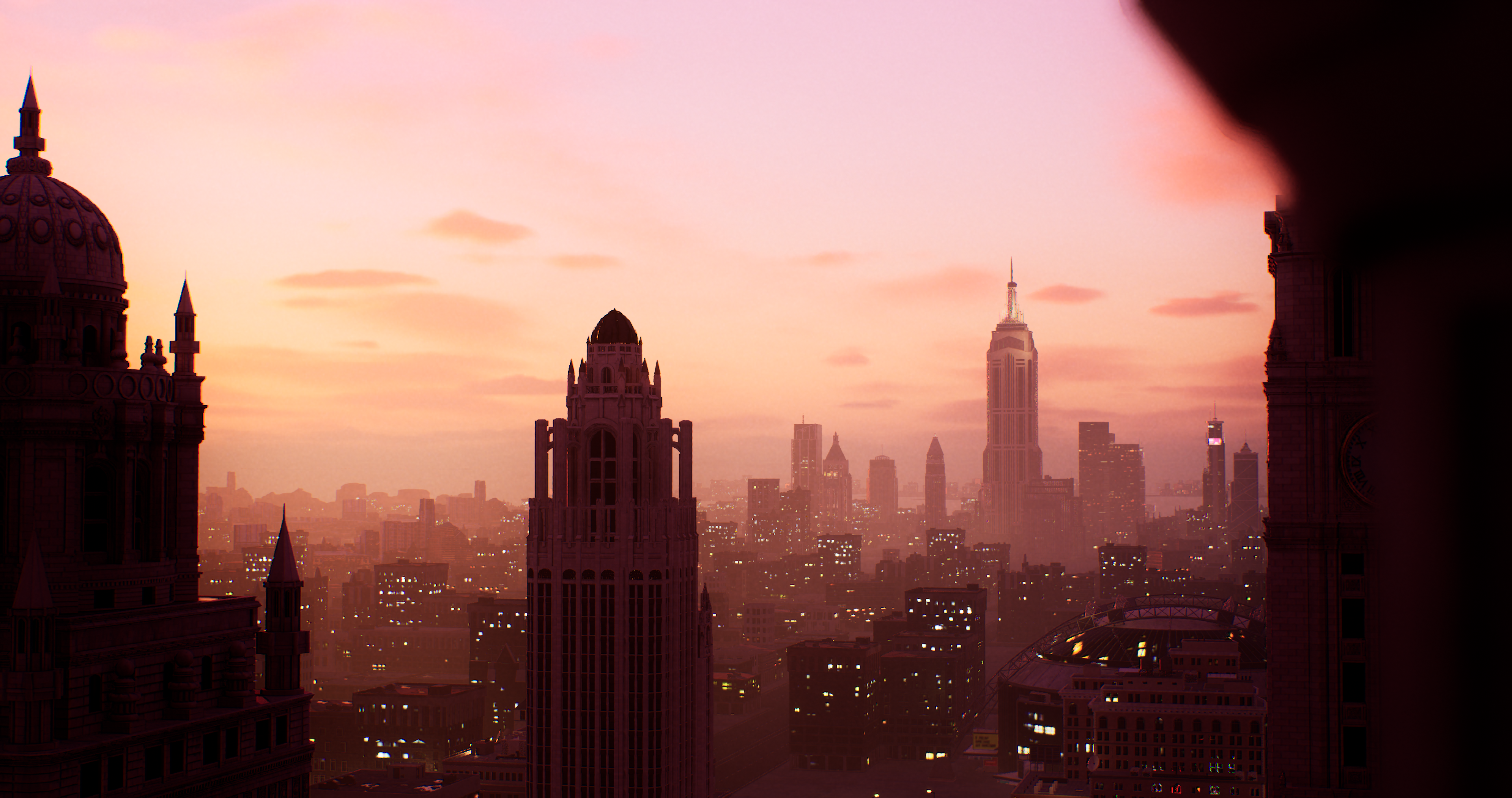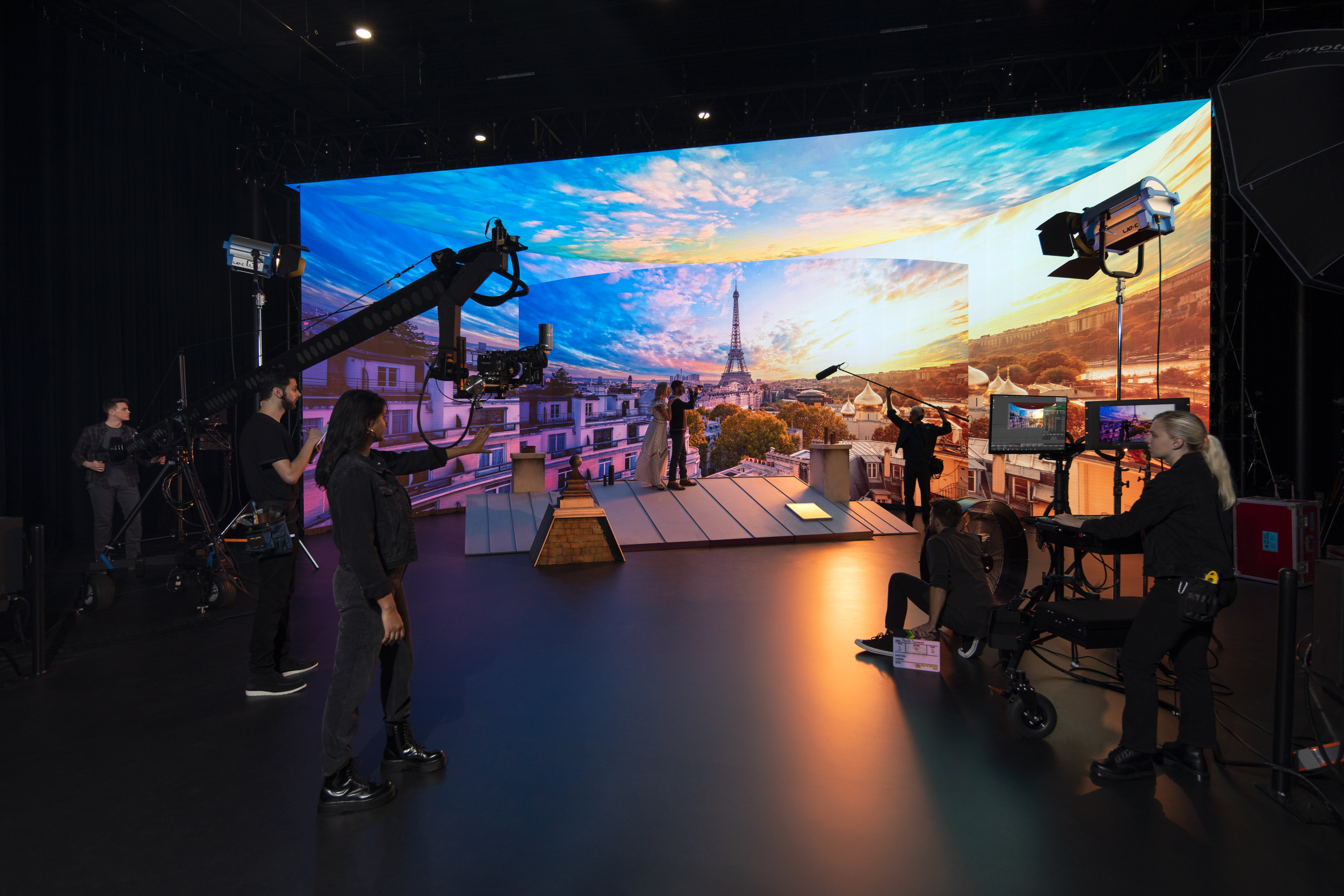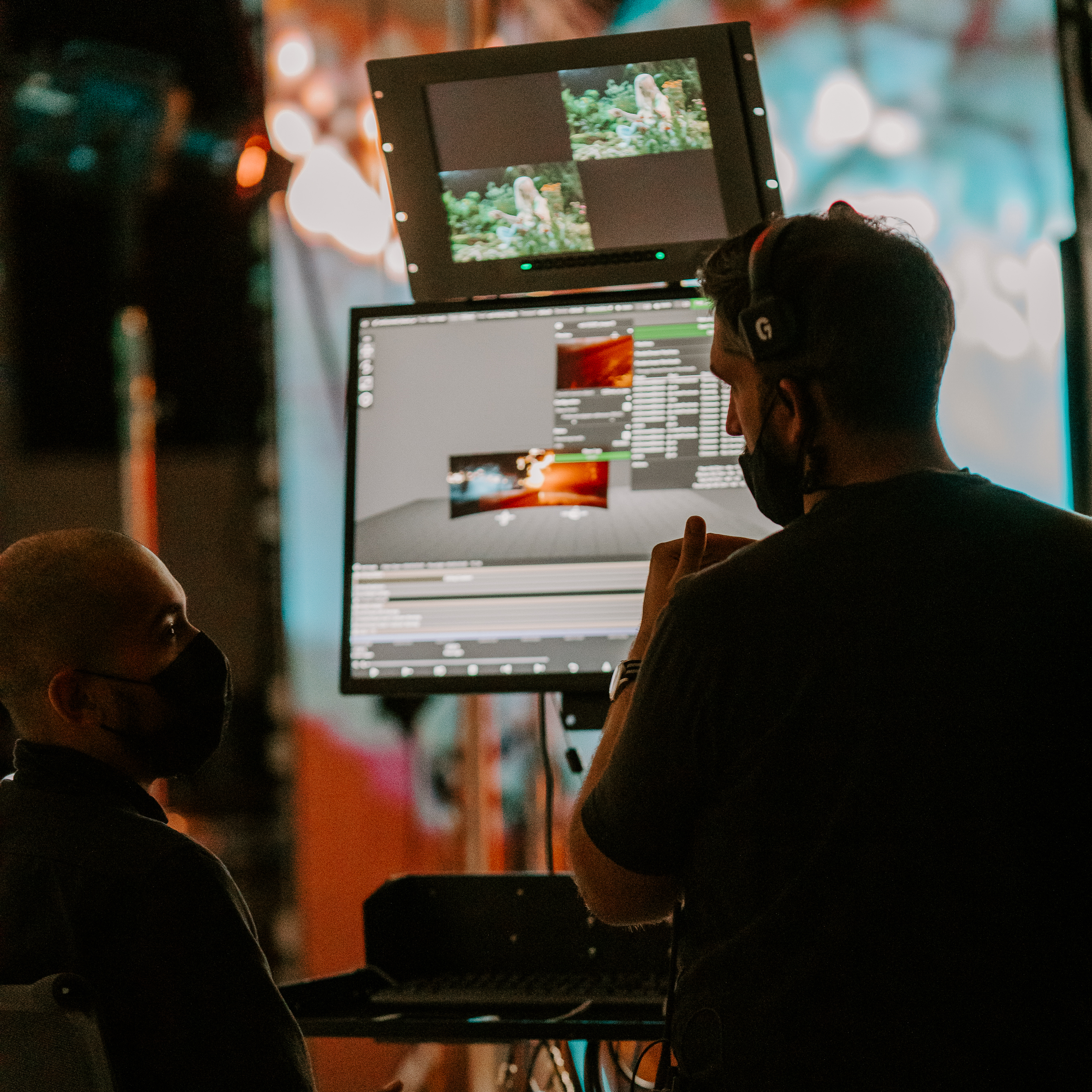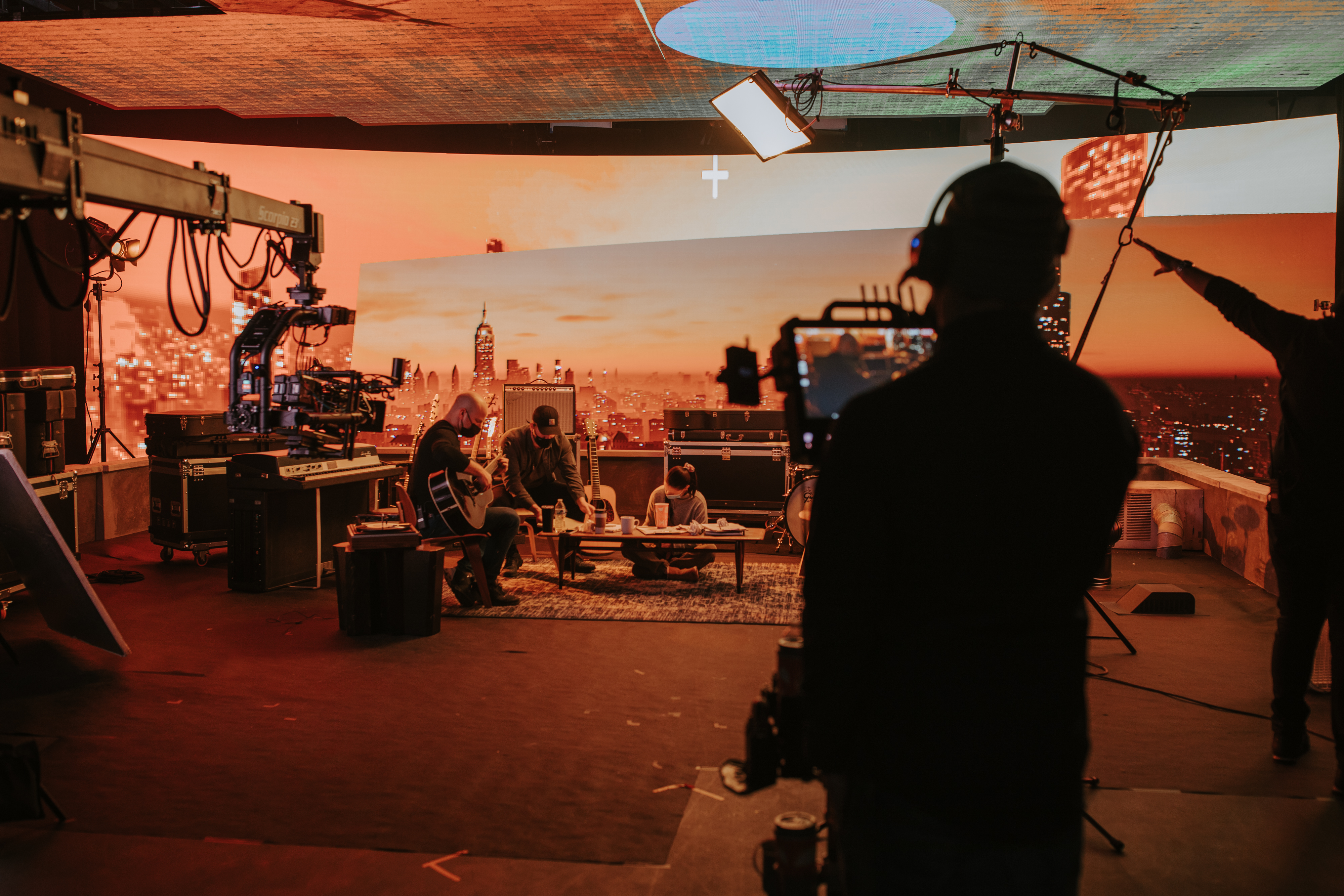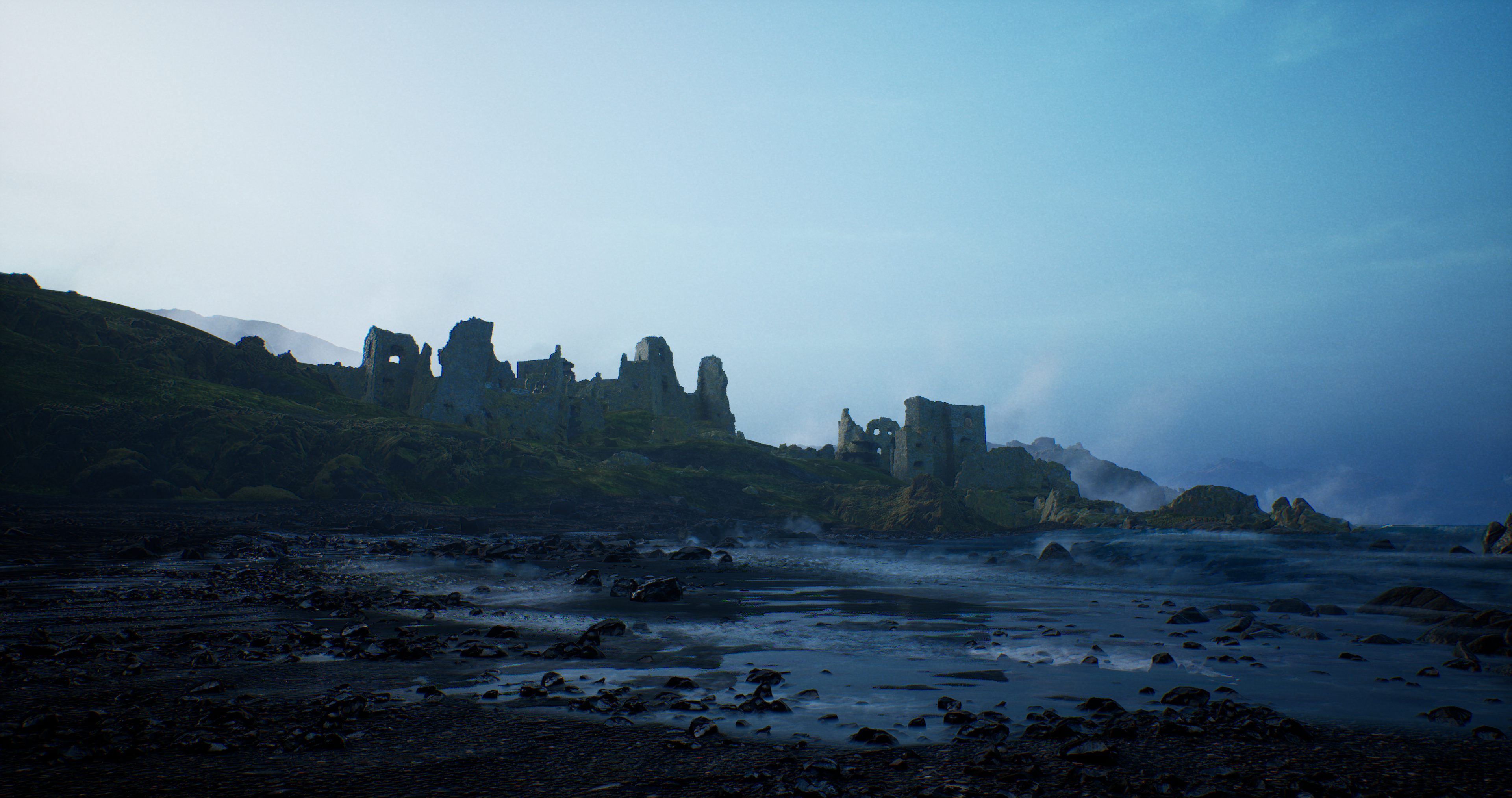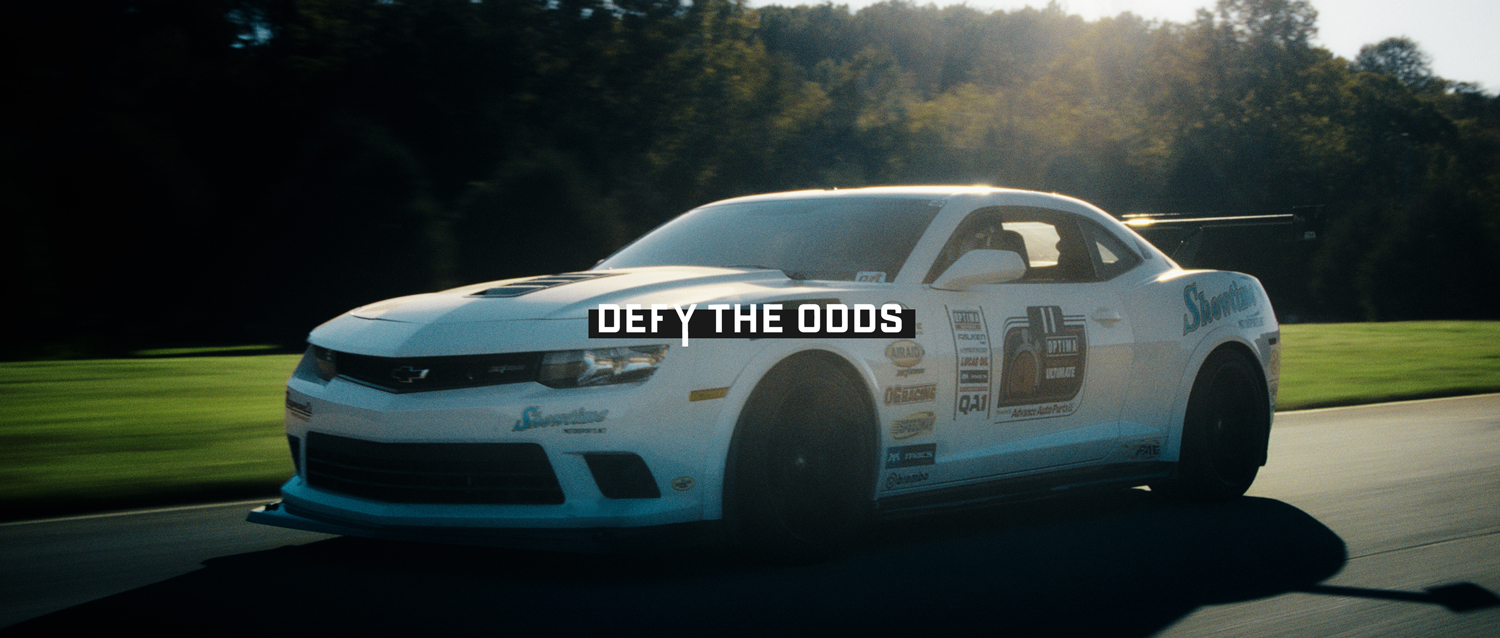This stage marks the actual shooting of the film, involving intricate collaboration between the director, cast, and crew on set to meticulously capture each scene as envisioned. The introduction of virtual production marks a significant shift from the traditional workflow, bringing about a fusion of advanced technology and conventional practices.
In traditional film settings, considerable time and resources are devoted to constructing physical sets and preparing actual locations, coupled with the meticulous setup of lighting rigs for each scene. The camera work, involving planned and executed movements, demands multiple takes for the perfect shot, while sound recording often necessitates controlled environments to minimize external noise. Actors perform in tangible, physical settings, interacting with real props and scenery, and most special effects, particularly visual effects (VFX), are added in post-production, sometimes creating a disconnect between the on-set action and the final output.
In contrast, virtual production streamlines many of these processes. Virtual environments displayed on LED Volumes replace physical ones, allowing for real-time adjustments and eliminating the need for extensive set construction or location shooting. This integration of virtual environments not only saves time but also enhances creative flexibility. Lighting in virtual production is dynamically integrated into these environments, closely aligning with the physical lighting on set, offering an immediate and consistent view of the final scene. Camera movements are tracked in real-time within these virtual spaces, ensuring a seamless blend of real and virtual elements, and enabling more dynamic and creative shots.
For actors performing on green screens, the challenge lies in reacting to elements they can't physically see, but the immediate playback of scenes with integrated VFX on LED Volumes assists in understanding and refining performances. Additionally, many visual effects are captured in-camera on set, significantly reducing the heavy lift in post-production VFX, leading to a more cohesive final product and a streamlined post-production process. Using motion capture technology, filmmakers can capture performances and create digital characters on set, ensuring that the interactions between CGI characters and live actors are realistic and believable.
This shift in production requires the traditional crew to work hand in hand with the volume control team (also known as the brain bar) as well as the virtual production supervisor to make sure virtual environments and physical assets are seamlessly integrated with the LED Volume and last-minute changes are implemented in real-time.
Summary:
1. Virtual sets reduce physical construction, enabling real-time environment changes and reducing location shooting needs.
2. Integrated lighting in virtual environments needs to align with on-set lighting to provide a realistic look.
3. Real-time camera tracking ensures seamless blending of real and virtual elements, enhancing dynamic shot possibilities.
4. Actors perform against virtual backgrounds they can see on set, offering interactive scenes and enhanced performances.
5. Many special effects are added in real-time, streamlining the post-production process and improving scene cohesion.
